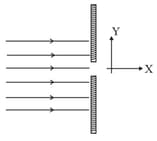EASY
Earn 100
Find the missing order for a double slit Fraunhoffer diffraction pattern if the slit and used the are separated by .
(a)
(b)
(c)
(d)
50% studentsanswered this correctly
Important Questions on Wave Optics and Interference
HARD
MEDIUM
EASY
EASY
MEDIUM
EASY
MEDIUM
MEDIUM
(i) Fringes are of unequal width
(ii) Fringes are of equal width
(iii) Light energy is conserved
(iv) Intensities of all bright fringes are equal
EASY
MEDIUM
HARD
EASY
EASY
EASY
MEDIUM
EASY
EASY
MEDIUM
EASY
EASY


